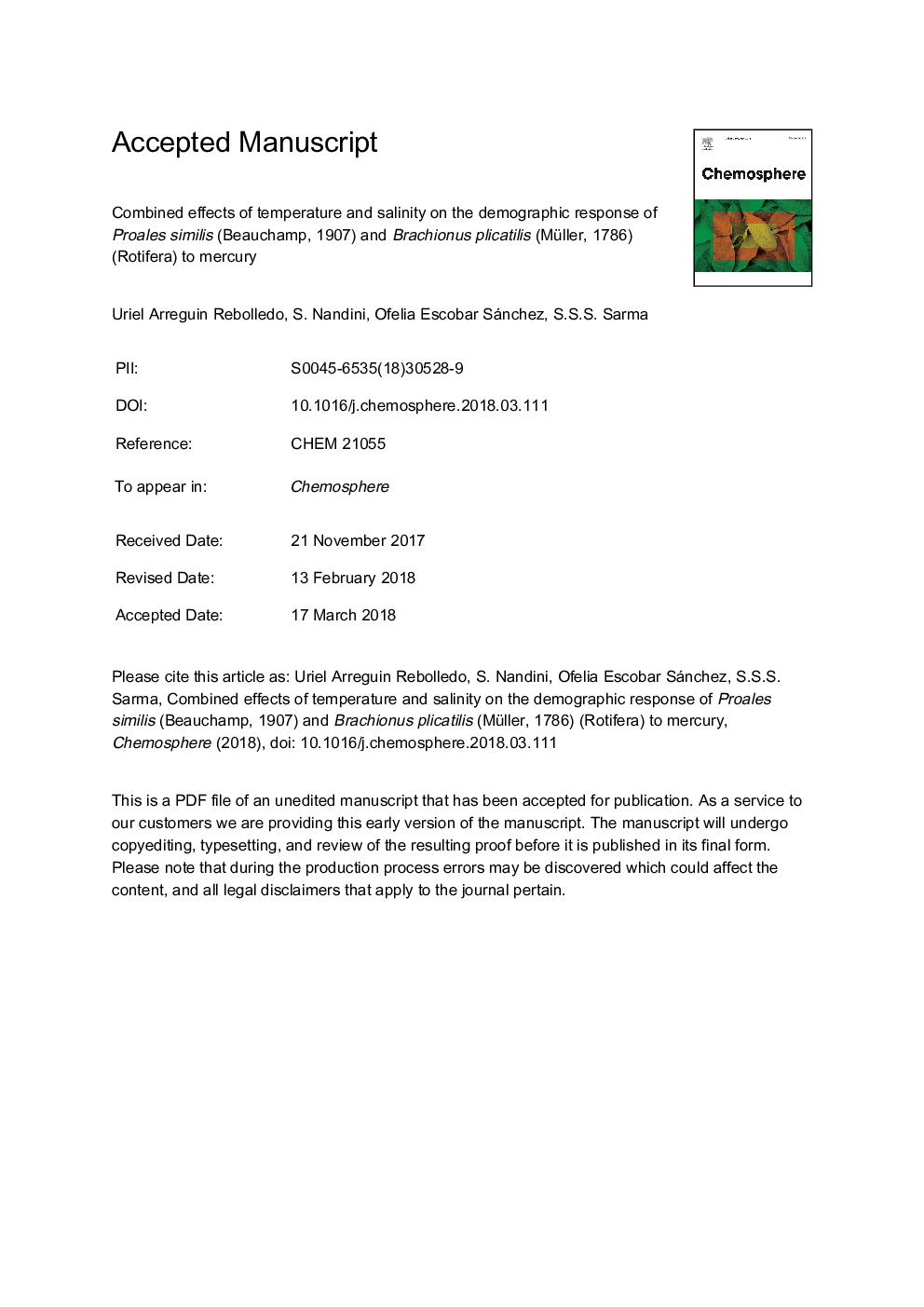| Article ID | Journal | Published Year | Pages | File Type |
|---|---|---|---|---|
| 8851430 | Chemosphere | 2018 | 37 Pages |
Abstract
The demographic response of the brackish-water rotifers Proales similis and Brachionus plicatilis to mercury (0.5, 2, 8 and 32â¯Î¼gâ¯Lâ1 of HgCl2) at different salinity levels (10 and 20â°) and two temperature (25â¯Â°C and 32â¯Â°C) regimes were evaluated. Median lethal concentration (LC50) for P. similis and B. plicatilis was 10 and 16â¯Î¼gâ¯Lâ1, respectively, showing that Proales similis was more sensitive to mercury than B. plicatilis. The rate of population increase (r) for both species was greater at 10â° salinity and 32â¯Â°C (ranged from 0.6 to 0.95 dâ1). The r-value decreased as the concentration of mercury in the medium increased. Regardless of the temperature, at lower salinity and higher mercury concentration (32â¯Î¼gâ¯Lâ1), P. similis died within six days. The survivorship of P. similis and B. plicatilis was higher at 25 °C than at 32â¯Â°C (ranged from 5 to 8 and 7-13â¯d, respectively). Fecundity was higher at 32â¯Â°C than at 25â¯Â°C for both rotifers species. There was a significant effect of the interaction among salinity, temperature, and mercury in both species on the reproductive variables such as net and gross reproductive rates, generation time and the rate of population increase. Considering the sensitivity of P. similis, we suggest that this species be included in the list of marine bioassay organisms.
Keywords
Related Topics
Life Sciences
Environmental Science
Environmental Chemistry
Authors
Uriel Arreguin Rebolledo, S. Nandini, Ofelia Escobar Sánchez, S.S.S. Sarma,
